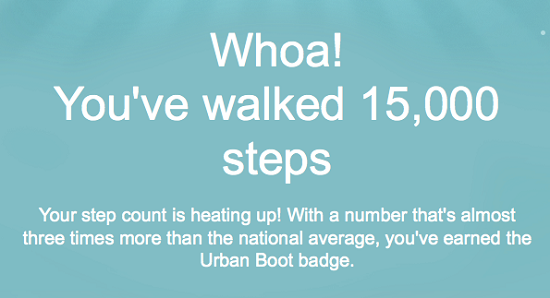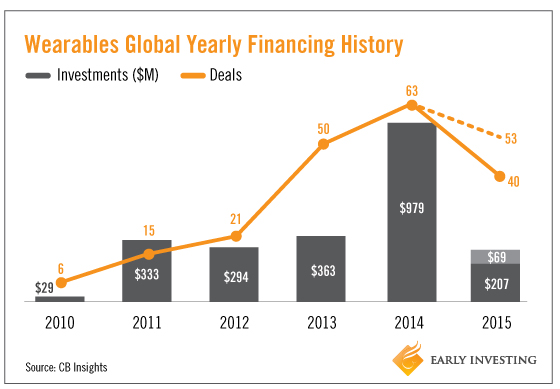I was sure the email I got from Fitbit yesterday was a joke.
It said I earned some kind of badge having to do with footwear or living in the city or both. Here’s the message I got…

So, yes, I wear a Fitbit bracelet.
It tracks some of the exercise I do. Though I estimate just a fraction.
It doesn’t track my bike rides. Or the elliptical machines I use at the gym.
But this article isn’t a critique of the Fitbit bracelet. A company sent it to me as a gift. Fitbit has higher-end and more updated models now. I’m sure they work better than mine.
I chuckled when I read the email, though. I had just returned from a weeklong vacation. Did a lot of eating and drinking. And gained a few pounds.
I didn’t feel exactly fit. In fact, I’ve never felt less deserving of any kind of exercise award as I did upon reading that email.
Fading Hype
Fitness wearables have gotten a lot of hype over the past couple of years. And a lot of money has chased that hype.
This is what the past few years look like…

It got a little crazy in 2014. The money going into wearable funding roughly tripled compared to the preceding three years.
I was never a big fan myself. I’ve been regularly working out for 40 years. I didn’t need a wearable to lure me into a gym or convince me to jump on a bike.
But I wore the fitness bracelet hoping to see what the buzz was about.
I quickly learned that the technology has got to get better. But that’s not the biggest challenge.
Two things need to happen. One, the industry needs to prove that wearables promote health.
It seems the industry takes this as self-evident. That proving it would be a big waste of time.
That’s a big mistake.
Wearable makers are setting themselves up for a rude awakening. If they don’t wise up, they’re going to suffer the same fate as luminosity.com.
Luminosity provides online games that exercise the mind.













Leave A Comment